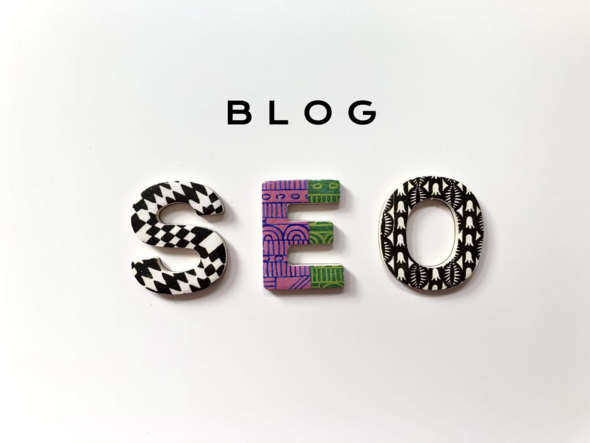Ready to Rank? Your Blog Post SEO Journey Starts Here
Want your blog posts to climb search engine rankings and attract more readers? This blog post SEO checklist provides actionable steps to optimize your content for success in 2025. We'll cover everything from keyword research and title tag optimization to image optimization and page speed, ensuring your content is easily discoverable by search engines. Implementing these SEO best practices will drive more organic traffic to your website and increase your online visibility. This checklist covers keyword research, meta descriptions, header structure, internal and external linking, image optimization, content length, and page speed—all crucial for a high-ranking blog post.
1. Keyword Research and Optimization
Keyword research and optimization is the cornerstone of any successful blog post SEO checklist. It's the process of identifying and strategically using the terms your target audience types into search engines when looking for information, products, or services related to your content. This involves much more than simply brainstorming a list of words; it requires in-depth research into search volume (how often a keyword is searched), competition (how many other websites are targeting the same keyword), and user intent (what users are hoping to achieve when searching for that keyword). By understanding these elements, you can select primary and secondary keywords that will be naturally integrated throughout your blog post content, ultimately driving organic traffic to your website.

Effective keyword research involves finding the sweet spot between search volume and competition. High-volume keywords often have fierce competition, making it difficult for new or smaller websites to rank. Conversely, low-volume keywords might not drive enough traffic to be worthwhile. The goal is to find keywords with a reasonable search volume and manageable competition. This often involves focusing on long-tail keywords, which are longer, more specific phrases that target a niche audience. For example, instead of targeting "shoes," you might target "best running shoes for marathon training."
A crucial first step in optimizing your blog posts is thorough keyword research. Understanding search volume, keyword difficulty, and user intent will inform your content strategy and help you target the right audience. For a deep dive into effective keyword research strategies, check out this comprehensive guide: how to conduct keyword research for SEO. Once you have your keywords, you need to understand the search intent behind them. Are users looking for information (informational intent), comparing products (commercial intent), navigating to a specific website (navigational intent), or making a purchase (transactional intent)? Matching your content to the user's intent is crucial for ranking well and providing a positive user experience.
Keyword research and optimization offers several advantages. It increases your blog post's organic search visibility and rankings, driving more qualified traffic to your website. By aligning your content with user search intent, you attract visitors actively seeking the information you provide. Furthermore, keyword research can improve the structure and focus of your content, making it more engaging and informative.
However, there are some potential downsides to be aware of. Overzealous keyword optimization can lead to keyword stuffing, a practice where keywords are crammed into the text unnaturally, negatively impacting readability and SEO. The research process itself can be time-consuming, especially for competitive niches. Ranking for highly competitive keywords can also be challenging, requiring significant effort in content creation and promotion. Finally, search trends and keyword popularity can change over time, requiring ongoing research and adjustments to your strategy.
Successful examples of keyword optimization abound. HubSpot consistently publishes comprehensive blog posts targeting specific marketing keywords, while Neil Patel leverages long-tail keywords to reach a wider audience in the digital marketing space. Moz, a leading SEO software company, expertly optimizes its articles for relevant search engine optimization terms.
To implement effective keyword research in your blog post SEO checklist, consider these actionable tips: use tools like Ahrefs, SEMrush, or Google Keyword Planner for research; target keywords with a monthly search volume between 100 and 10,000; include your primary keyword in the first 100 words of your post; use variations and synonyms naturally throughout your content; and, most importantly, focus on user intent rather than solely on search volume. Learn more about Keyword Research and Optimization
Keyword research and optimization is a crucial first step in any blog post SEO strategy. By understanding how to identify and utilize relevant keywords effectively, you can significantly improve your content's visibility, attract more targeted traffic, and achieve your blogging goals.
2. Title Tag and Meta Description Optimization
Crafting compelling and SEO-optimized title tags and meta descriptions is crucial for attracting readers to your blog posts. These elements act as your blog's storefront window in search engine results pages (SERPs), offering a preview of the content within. Effective title tags and meta descriptions directly influence click-through rates (CTR), impacting your search rankings and overall blog success. Think of them as your first impression – you want it to be captivating enough to entice users to click and explore further. This optimization involves strategically crafting both elements to be concise, informative, and keyword-rich while also appealing to your target audience.

The title tag is the clickable headline that appears in search results and at the top of your browser tab. It should accurately reflect the content of your blog post while incorporating relevant keywords. Meta descriptions, on the other hand, provide a brief summary of your post's content, appearing beneath the title tag in SERPs. They offer a more detailed glimpse into the value your content provides. Both elements work in tandem to persuade users that your blog post is precisely what they’re looking for. For any blog post SEO checklist, optimizing these two elements is a non-negotiable step. Learn more about Title Tag and Meta Description Optimization
Optimizing these elements involves adhering to specific character limits for optimal display. Title tags should ideally be between 50-60 characters to avoid truncation in search results. Meta descriptions should aim for 150-160 characters to provide sufficient context without overwhelming the user. Including your primary keyword in both the title tag and meta description is essential for search engine visibility. However, keyword stuffing should be avoided. Instead, focus on crafting natural-sounding text that accurately reflects your content.
This optimization process is a balancing act between SEO requirements and user appeal. While incorporating keywords is essential for search engine recognition, it's equally important to write compelling copy that resonates with your target audience. Think about incorporating a clear call-to-action in your meta description, encouraging users to click and engage with your content.
Several successful blogs exemplify the effective use of title tag and meta description optimization. Buffer, for example, consistently uses action-oriented titles like "How to Create a Social Media Strategy in 8 Easy Steps" which clearly communicates the value proposition and entices clicks. Similarly, Canva's design tutorials often feature clear, benefit-focused titles that resonate with their target audience. CoSchedule, a marketing platform, often utilizes data-driven titles incorporating numbers and highlighting specific benefits.
To effectively optimize your own title tags and meta descriptions, consider these actionable tips: Include your primary keyword near the beginning of your title tag for maximum impact. Use power words like "Ultimate," "Complete," or "Essential" to create a sense of urgency and increase appeal. Add the current year to titles for time-sensitive content to ensure relevance. Write meta descriptions that expand on the promise of your title tag, providing further details and enticing users to click. Finally, consistently test different variations of your titles and meta descriptions and monitor click-through rates to identify what resonates best with your audience. Remember, continuous refinement is key to achieving optimal results.
While title tag and meta description optimization offers numerous benefits, including improved click-through rates, enhanced search engine rankings, and clear previews of content value, it's also important to be aware of potential drawbacks. Character limits can be restrictive, sometimes making it challenging to convey all the necessary information. Search engines may occasionally override your carefully crafted meta descriptions with their own generated snippets. This necessitates finding a balance between SEO best practices and crafting genuinely appealing copy for your target audience. Finally, consistent monitoring and updates based on performance are crucial to maintain optimal effectiveness. The landscape of search engine algorithms is ever-changing, so staying adaptable is essential.
3. Header Structure and Content Organization
Header structure and content organization are crucial for blog post SEO. This involves creating a logical hierarchy of headers (H1-H6) that guides both users and search engines through your content. A well-defined header structure improves readability, helps search engines understand the topic and subtopics of your content, and creates opportunities to snag coveted featured snippets in search results. Think of your headers as the skeleton of your blog post, providing structure and support for the rest of the text. They allow readers to quickly scan your content and understand the main points, while also signaling to search engines what each section is about. In the competitive landscape of online content, a clear and organized structure is key to attracting and retaining readers, as well as ranking higher in search results.

This element deserves a place in any blog post SEO checklist because it directly impacts both user experience and search engine understanding. A clear header structure enhances readability and scannability, making it easier for readers to digest information and find what they’re looking for. This, in turn, leads to increased user engagement and a lower bounce rate – signals that search engines interpret as positive indicators of content quality. Moreover, a logical hierarchy of headers allows search engine crawlers to effectively index and categorize your content, boosting your chances of ranking for relevant keywords.
Key features of effective header structure and content organization include a single H1 tag encompassing the primary keyword, a logical hierarchy with H2s for main sections and H3s (and so on) for subsections, strategic keyword integration within subheadings, descriptive headers that accurately summarize section content, and consistent formatting and styling. For instance, if your H1 is "Blog Post SEO Checklist," your H2s might be "Keyword Research," "On-Page Optimization," and "Content Promotion," with H3s under "On-Page Optimization" like "Header Structure and Content Organization" and "Image Optimization."
Pros:
- Improved Readability and Scannability: Headers break up large blocks of text, making content easier to digest.
- Enhanced Search Engine Understanding: Headers provide a clear roadmap of your content's structure and topics.
- Increased Featured Snippet Opportunities: Well-structured content with descriptive headers is more likely to be featured in search results.
- Better User Experience and Engagement: A positive user experience leads to longer time on page and lower bounce rates.
- Improved Accessibility: Proper header structure supports screen readers and assistive technologies.
Cons:
- Over-Optimization Can Appear Spammy: Keyword stuffing in headers can harm your SEO efforts.
- Requires Careful Planning: Structuring content requires thoughtful organization beforehand.
- May Limit Creative Writing Flow: For some writers, focusing on structure can initially disrupt their creative process.
- Needs Regular Review: Ensuring consistency in header usage requires periodic checks and updates.
Examples of successful implementation can be seen on websites like Wikipedia, known for its comprehensive use of hierarchical headers, Shopify’s blog, which features clear section divisions, and the Content Marketing Institute, which consistently delivers well-structured educational content. You can Learn more about Header Structure and Content Organization to gain a deeper understanding of how these principles are applied in practice.
Tips for Implementing Effective Header Structure:
- Use Only One H1 Tag Per Page: This tag should clearly state the main topic of your blog post.
- Include Target Keywords in at Least 2-3 H2 Tags: This helps search engines understand the relevance of your content.
- Keep Headers Under 70 Characters When Possible: Concise headers are easier to read and scan.
- Make Headers Descriptive and Specific to Section Content: Accurately reflect the information contained within each section.
- Use Headers to Break Up Content into Digestible Sections: Aim for paragraphs no longer than 3-4 sentences for improved readability.
The importance of header structure and content organization has been popularized by web accessibility standards (WCAG), Google's content quality guidelines, and SEO experts like Brian Dean and Barry Schwartz. By following these guidelines, you can significantly improve both the user experience and SEO performance of your blog posts.
4. Internal and External Linking Strategy
A robust internal and external linking strategy is a cornerstone of effective SEO. It involves strategically placing links within your content that point to other relevant pages on your website (internal links) and authoritative external sources. This practice isn't just about SEO; it significantly enhances user experience and builds your website's credibility. By weaving a web of relevant connections, you're guiding both search engines and readers through your content, providing context, and offering valuable resources. This, in turn, helps search engines understand your site structure, distributes page authority (the power a page holds in search engine rankings), and provides additional value to readers. A well-executed linking strategy can be the difference between a blog post that gets lost in the digital noise and one that ranks high, attracts readers, and establishes your website as a trusted resource.

A successful linking strategy typically includes 3-5 internal links to relevant content on your site and 2-3 external links to reputable sources. Crucially, the anchor text (the visible, clickable text of a hyperlink) should be descriptive, clearly indicating the link's destination. For instance, instead of using generic anchor text like "click here," opt for something more descriptive like "keyword research guide" if the link leads to a guide about keyword research. This helps both users and search engines understand the context of the link. All links, internal and external, should enhance the content's value and contribute positively to the user experience. Furthermore, strategic placement of links throughout the content is essential. Avoid clustering all your links at the beginning or end of the post. Instead, integrate them naturally within the flow of your writing where they provide further context or support your points.
The benefits of a strong internal and external linking strategy are numerous. Internally, it improves site structure and facilitates the distribution of page authority, boosting the ranking potential of your key pages. It also increases time spent on site and reduces bounce rate (the percentage of visitors who leave a website after viewing only one page) as users click through to other relevant content on your website. For search engines, internal linking makes it easier to crawl and index your content, ensuring that all your valuable pages are discovered. Externally, linking to authoritative sources builds relationships with other websites, provides additional value and credibility to your readers, and signals to search engines that your content is well-researched and trustworthy. Examples of successful implementations include Wikipedia's extensive internal linking system, HubSpot's blog posts linking to their own tools and related content, and Moz's SEO content linking to industry studies and their own research.
However, like any SEO tactic, linking has potential downsides. External links can lead visitors away from your site, while broken links can hurt user experience and SEO. Over-linking can appear spammy and negatively impact your rankings. Therefore, a linking strategy requires ongoing maintenance and monitoring to ensure all links are functioning correctly and adding value. Learn more about Internal and External Linking Strategy
To effectively implement this strategy in your blog posts, prioritize linking to your highest-value pages to boost their authority. Always use natural, descriptive anchor text. Open external links in new tabs to keep users on your site longer. Regularly audit and fix broken links to maintain a positive user experience. Finally, prioritize linking to recent, authoritative sources to ensure the credibility of your content. By following these tips, you can leverage the power of internal and external linking to improve your blog post SEO, enhance user experience, and establish your website as a valuable resource in your niche. This is why a robust internal and external linking strategy deserves a prominent place in any blog post SEO checklist.
5. Image Optimization and Alt Text
Image optimization and alt text are crucial elements of any effective blog post SEO checklist. While often overlooked, optimizing your images can significantly impact your website's performance, accessibility, and search engine visibility. This process involves fine-tuning various aspects of your images, from file format and compression to descriptive alt text and meaningful file names, all working together to improve user experience and boost your search engine rankings. In a world where visual content reigns supreme, ignoring image optimization is akin to leaving valuable SEO potential on the table.
How does image optimization work? Search engines crawl your website's content, including images. They rely on various factors, including file names, alt text, and file size, to understand the context and relevance of your images. Optimized images load faster, improving page speed and user experience. Furthermore, descriptive alt text aids screen readers in conveying image content to visually impaired users, enhancing accessibility. Finally, optimized images can appear in image search results, driving additional traffic to your website.
Let's delve into the key features of effective image optimization:
- Optimized File Formats (WebP, JPEG, PNG): Choosing the right file format is the first step. WebP offers superior compression and quality compared to JPEG and PNG, resulting in smaller file sizes without sacrificing visual appeal. However, ensure browser compatibility before exclusively using WebP. JPEG is suitable for photographs, while PNG is ideal for graphics with sharp lines and transparency.
- Compressed File Sizes (Under 100KB when possible): Large image files significantly slow down page loading times. Compressing your images without compromising quality is essential. Aim for file sizes under 100KB whenever feasible.
- Descriptive Alt Text including Relevant Keywords: Alt text serves two primary purposes: accessibility and SEO. It provides textual descriptions of images for screen readers and search engines. Include relevant keywords within your alt text, but prioritize accurate descriptions that reflect the image's content and context within the blog post.
- Meaningful File Names: Avoid generic file names like "image1.jpg." Instead, use descriptive file names that accurately reflect the image's content, including relevant keywords when appropriate. For example, "blog-post-seo-checklist-image1.jpg" is far more informative than a generic numbered file.
- Appropriate Image Dimensions for Responsive Design: Ensure your images are appropriately sized for different devices and screen resolutions. Using excessively large images that are then scaled down by the browser wastes bandwidth and slows down page load times. Consider using different image sizes for various screen sizes to optimize performance.
The benefits of image optimization are numerous:
- Improved Page Loading Speed and Core Web Vitals: Smaller image files contribute to faster page load times, a crucial factor for user experience and SEO. Google's Core Web Vitals emphasizes page speed, making image optimization essential for ranking well.
- Enhanced Accessibility for Visually Impaired Users: Descriptive alt text enables screen readers to convey image content to visually impaired users, promoting inclusivity and improving website accessibility.
- Opportunities for Image Search Traffic: Optimized images can appear in image search results, driving additional traffic to your blog post.
- Reduced Server Bandwidth Usage: Smaller image files reduce the amount of data transferred between your server and users' browsers, saving bandwidth and potentially lowering hosting costs.
- Contributes to Overall SEO Performance: Image optimization, combined with other SEO practices, contributes to a stronger overall SEO strategy, leading to improved search engine rankings.
However, there are also challenges to consider:
- Time-Intensive Optimization Process: Optimizing images can be time-consuming, especially for websites with a large number of visuals.
- Balancing Quality and File Size: Finding the right balance between image quality and file size requires careful consideration. Overly aggressive compression can degrade image quality.
- Requires Technical Knowledge of Image Formats: Understanding the nuances of different image formats is crucial for making informed optimization decisions.
Several successful examples highlight the importance of image optimization. Pinterest, known for its image-heavy platform, utilizes a sophisticated image optimization strategy to ensure fast loading times. National Geographic provides excellent examples of web images with detailed and descriptive alt text. E-commerce giants like Amazon rely heavily on optimized product images to enhance the user experience and drive sales.
Here are some actionable tips for optimizing your blog post images:
- Use Tools: Utilize image compression tools like TinyPNG or ImageOptim to reduce file sizes without sacrificing quality.
- Keywords in File Names: Include your primary keyword in image file names when appropriate.
- Write Descriptive Alt Text: Craft alt text that accurately describes the image's content and context within the blog post.
- Lazy Loading: Implement lazy loading to defer loading of images below the fold, improving initial page load times.
- Choose WebP: Opt for the WebP format when browser compatibility allows for optimal compression and quality.
By focusing on image optimization and alt text, you are investing in a crucial aspect of your blog post SEO checklist. This practice contributes to a faster, more accessible, and ultimately more successful website.
6. Content Length and Quality
Content length and quality are crucial factors in your blog post SEO checklist. This element focuses on creating comprehensive, valuable content that thoroughly covers a topic while keeping readers engaged. Search engines prioritize content that provides complete and in-depth information, satisfying user search intent and establishing your blog as a trusted resource. While longer, high-quality content tends to perform better in search results, aiming for an arbitrary word count shouldn't be the primary goal. The focus should always be on delivering substantial value to your audience. This is a cornerstone of any effective blog post SEO checklist.
This approach works by aligning with how search engines evaluate content. Google, for example, uses complex algorithms to determine which pages best answer a user's query. Factors like topical depth, expertise, authoritativeness, and trustworthiness (E-A-T) all play a role. Longer content often allows you to delve deeper into a subject, providing more comprehensive information and demonstrating greater expertise. This, in turn, can lead to higher rankings, increased user engagement, and more opportunities for building backlinks.
For instance, Backlinko's comprehensive SEO guides, often exceeding 5,000 words, are renowned for their depth and detail, attracting a large audience and earning numerous backlinks. Similarly, HubSpot's detailed marketing tutorials and Moz's in-depth SEO research articles exemplify the power of long-form, high-quality content. These examples showcase how substantial, well-researched content can establish a website as a leading authority in its niche.
So, when should you prioritize content length and quality in your blog post SEO checklist? Essentially, always. However, it's particularly critical when tackling competitive keywords. If you're trying to rank for a highly sought-after term, you need to provide more value than your competitors. This often means creating longer, more in-depth content that covers all aspects of the topic. Think of it as building a skyscraper of information – towering above the competition.
Here are some actionable tips for incorporating this into your content creation process:
- Research competitor content length for your target keywords: Analyze the top-ranking pages for your target keyword to get a sense of the average content length. This can provide a benchmark for your own content creation.
- Focus on answering all related questions users might have: Think beyond the primary keyword and consider all the related questions users might be asking. Addressing these questions comprehensively adds value and increases the likelihood of your content ranking for long-tail keywords.
- Include data, statistics, and original research when possible: Data-driven content adds credibility and authority to your writing. Original research, in particular, can set your content apart and make it more shareable.
- Use storytelling and examples to maintain engagement: Even long-form content needs to be engaging. Incorporate storytelling and real-world examples to keep readers interested and illustrate your points effectively.
- Break up long content with visuals and formatting: Use headings, subheadings, bullet points, images, and videos to break up large blocks of text and make your content easier to scan and digest.
The benefits of prioritizing content length and quality are numerous. It can lead to higher rankings for competitive keywords, increased social shares and engagement, a better user experience and increased satisfaction, more opportunities for internal linking, and ultimately, the establishment of your website's authority and expertise within your niche.
However, there are also some potential drawbacks to consider. Creating high-quality, long-form content requires a significant time investment. It can also overwhelm readers if not well-structured. Longer content may require more maintenance and updates, and the quality can suffer if you're solely focused on reaching a certain word count. Striking a balance between length and value is essential.
Learn more about Content Length and Quality
This strategy is popularized by concepts like Brian Dean's skyscraper technique, the insights of content marketing pioneers like Joe Pulizzi, and Google's E-A-T guidelines. By focusing on delivering valuable, in-depth content, you're not just optimizing for search engines, you're building a valuable resource for your audience and establishing your website as a trusted authority in your industry. Including this approach in your blog post SEO checklist is non-negotiable for long-term success.
7. Page Speed and Technical Performance
In the realm of blog post SEO checklists, page speed and technical performance often get overlooked. However, this critical aspect significantly impacts your blog's success. Ensuring your blog post loads quickly and performs seamlessly across devices and network conditions isn't just a technical nicety; it's a fundamental element of a strong SEO strategy and a positive user experience. A slow-loading website can frustrate visitors, leading to higher bounce rates and lost conversions. Conversely, a fast and responsive website contributes to improved search engine rankings, better user engagement, and ultimately, a more successful blog. This is why page speed deserves its place in this blog post SEO checklist.
Page speed refers to the time it takes for a web page to fully load. Technical performance encompasses a broader range of factors, including how efficiently the page renders, how quickly users can interact with it, and its overall stability. Google has confirmed that page speed is a ranking factor, meaning faster websites are more likely to rank higher in search results. Beyond SEO, page speed directly impacts user experience. No one wants to wait for a page to load, especially in today's fast-paced digital world. A slow loading speed can lead to visitors abandoning your site before they even have a chance to read your content, negatively impacting your bounce rate. This, in turn, can hurt your SEO as search engines interpret high bounce rates as a sign of low-quality content or a poor user experience.
Several key features contribute to optimal page speed and technical performance:
- Page Load Time Under 3 Seconds: Aiming for a page load time of under 3 seconds is a good benchmark. This ensures a quick and snappy user experience.
- Optimized Core Web Vitals (LCP, FID, CLS): Core Web Vitals are a set of metrics that measure user experience related to loading performance, interactivity, and visual stability. Largest Contentful Paint (LCP) measures how long it takes for the largest element on the page to load. First Input Delay (FID) measures the time it takes for the page to become interactive. Cumulative Layout Shift (CLS) measures the visual stability of the page.
- Mobile-Responsive Design: With a significant portion of internet traffic coming from mobile devices, ensuring your blog is mobile-responsive is crucial for both user experience and SEO.
- Compressed and Optimized Code: Minimizing and compressing your website's code reduces the amount of data that needs to be downloaded, leading to faster load times.
- Efficient Hosting and CDN Usage: A reliable hosting provider and a Content Delivery Network (CDN) can significantly improve your website's speed and performance by distributing your content across multiple servers geographically closer to your users.
The benefits of optimizing page speed and technical performance are numerous:
- Improved Search Engine Rankings: Google rewards faster websites with higher rankings.
- Better User Experience and Lower Bounce Rates: A faster website provides a more enjoyable experience for users, encouraging them to stay longer and explore your content.
- Higher Conversion Rates: A fast and responsive website can lead to increased conversions, whether it's signing up for your newsletter or making a purchase.
- Reduced Server Costs: Optimized code and efficient hosting can reduce the load on your servers, potentially lowering your hosting costs.
- Better Performance on Mobile Devices: Mobile optimization is essential for reaching a wider audience and providing a positive experience for mobile users.
However, achieving optimal page speed and technical performance isn't without its challenges:
- Requires Technical Knowledge or Developer Assistance: Implementing some optimization techniques may require technical expertise.
- May Need Investment in Better Hosting or CDN: Upgrading your hosting plan or subscribing to a CDN can involve additional costs.
- Ongoing Monitoring and Optimization Needed: Page speed and performance require continuous monitoring and optimization to maintain optimal results.
- Can Be Complex to Troubleshoot Issues: Identifying and resolving performance issues can sometimes be a complex process.
Successful implementations of fast-loading pages are evident across the web. Medium's article pages are known for their quick loading times, contributing to a seamless reading experience. Google's AMP (Accelerated Mobile Pages) project, while now less prevalent, showcased the importance of speed for mobile users. Countless WordPress sites leverage caching plugins and optimization techniques to achieve impressive performance.
Here are some actionable tips to improve your blog's page speed and technical performance:
- Use Google PageSpeed Insights for Analysis: PageSpeed Insights is a free tool that analyzes your website and provides recommendations for improvement.
- Implement Caching Plugins or Solutions: Caching stores static versions of your website's files, reducing the load on your server and speeding up page load times.
- Minimize HTTP Requests and Optimize Database Queries: Reducing the number of HTTP requests and optimizing database queries can significantly improve performance.
- Use a Content Delivery Network (CDN): A CDN distributes your content across multiple servers, reducing latency and improving load times for users around the world.
- Regularly Monitor Core Web Vitals in Search Console: Track your Core Web Vitals in Google Search Console to identify and address any performance issues.
The importance of page speed and technical performance has been popularized by Google's Core Web Vitals initiative, as well as web performance advocates like Steve Souders and countless WordPress optimization experts. By prioritizing these factors, you can create a faster, more engaging, and ultimately more successful blog.
7-Point Blog SEO Checklist Comparison
| Checklist Item | Implementation Complexity 🔄 | Resource Requirements ⚡ | Expected Outcomes 📊 | Ideal Use Cases 💡 | Key Advantages ⭐ |
|---|---|---|---|---|---|
| Keyword Research and Optimization | Medium - requires research and analysis | Moderate - keyword tools and time | Higher organic rankings, targeted traffic | New and ongoing content creation targeting SEO | Increases visibility and matches user intent |
| Title Tag and Meta Description Optimization | Low - concise text editing and testing | Low - mainly writing skills | Improved CTR and better SERP presence | Content with strong external visibility needs | Direct impact on click-through rates |
| Header Structure and Content Organization | Low to Medium - planning and formatting | Low - content structuring | Better readability, featured snippet potential | Any content needing clarity and accessibility | Enhances UX and SEO with logical content flow |
| Internal and External Linking Strategy | Medium - strategic placement and maintenance | Moderate - ongoing monitoring | Improved site authority and user engagement | Websites with rich interlinked content | Boosts crawlability and authority distribution |
| Image Optimization and Alt Text | Medium - technical optimization and writing | Moderate - tools and format knowledge | Faster loading, accessibility, image SEO | Media-heavy sites or accessibility-focused content | Enhances loading speed and accessibility |
| Content Length and Quality | High - extensive research and writing | High - time and expertise required | Higher rankings, engagement, authority | In-depth articles and competitive keyword targets | Builds authority and improves user satisfaction |
| Page Speed and Technical Performance | High - technical setup and continuous tuning | High - developer skills and infrastructure | Improved rankings, user experience, conversions | Sites needing fast load times and mobile friendliness | Reduces bounce rates and improves conversions |
Conquer the Search Rankings: Your Blog Post SEO Checklist Awaits!
Mastering the elements of a blog post SEO checklist is crucial for attracting organic traffic and establishing your online presence. From meticulous keyword research and optimized title tags to strategic internal linking and a focus on delivering high-quality, reader-centric content, each item on this checklist plays a vital role in boosting your search engine rankings. By implementing these strategies, you’re not just optimizing individual blog posts; you’re building a foundation for sustained online growth, increased brand visibility, and ultimately, greater business success. Remember, SEO is an ongoing process, and consistent application of these best practices will yield the most significant long-term rewards.
The most impactful takeaways to prioritize are keyword optimization, compelling meta descriptions, well-structured content with clear headers, and a robust internal linking strategy. These core elements directly impact how search engines perceive and rank your content. By focusing on these areas, you can significantly improve your chances of reaching a wider audience and driving valuable traffic to your website.
Ready to put your new blog post SEO checklist into action and streamline your content creation process? BlogMaker offers powerful SEO tools and a user-friendly interface to simplify every step, from keyword integration to image optimization. Start creating high-ranking, optimized blog posts effortlessly with BlogMaker today!
SEO–ready, Analytics, No–code.
Your Content Publishing Engine
Deliver your SEO–driven content!
Visit BlogMaker.app



